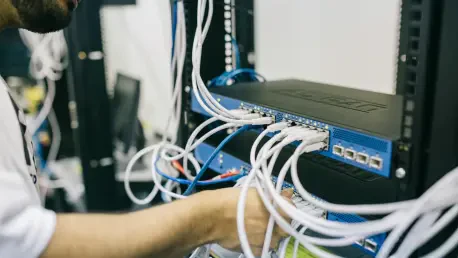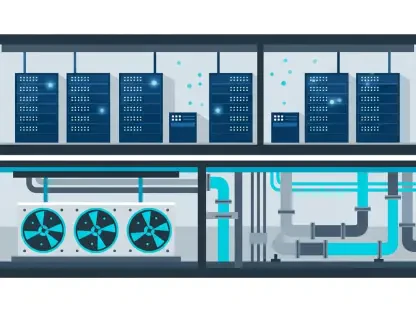As Oklahoma emerges as a hub for technological infrastructure, the rapid proliferation of data centers across the state has ignited a heated debate over their environmental footprint and the opacity surrounding their operations. These facilities, crucial for supporting cloud storage, streaming services, and other digital necessities, are expanding at an unprecedented rate, with projects like Project Clydesdale near Owasso and a new Google facility in Stillwater marking significant developments. However, beneath the promise of economic growth lies growing unease among lawmakers and residents about the strain on local resources. State Representative Amanda Clinton of Tulsa has become a vocal advocate for addressing these concerns, emphasizing the need for a balanced approach to industrial expansion. The surge in data centers, while a testament to technological progress, raises pressing questions about water and electricity consumption, as well as the broader implications for communities that host them. This issue demands a closer look at how Oklahoma can navigate the challenges of modernity without compromising its natural heritage.
Resource Demands and Community Impact
The immense resource demands of data centers have become a focal point of concern for Oklahoma’s policymakers and residents alike. These facilities, which power the backbone of digital life, consume staggering amounts of electricity and water, primarily for cooling systems that prevent servers from overheating. Reports suggest that a single data center can use up to a million gallons of water daily, often drawing directly from municipal supplies that communities rely on for basic needs. This heavy usage risks disrupting access to water for household activities like cooking and bathing, particularly in areas already facing resource constraints. Tai Nehisi, Executive Producer of Tulsa Tech Week, has highlighted how such consumption can affect local land and livelihoods, potentially altering the quality of life for many Oklahomans. The scale of this issue underscores the urgency of understanding the full scope of data centers’ operational needs and their ripple effects on the environment and society at large.
Beyond water, the electricity demands of data centers place additional pressure on Oklahoma’s energy grid, raising questions about sustainability and long-term planning. As these facilities require constant power to maintain operations, there is a growing worry that the state’s infrastructure may struggle to keep pace with the expanding digital economy. This concern is compounded by the fact that many data centers operate in relative secrecy, with limited public information available about their energy sources or efficiency measures. For rural communities hosting these centers, the benefits of job creation and economic investment are often overshadowed by fears of blackouts or increased utility costs passed on to residents. State Representative Amanda Clinton has pointed out that while technological growth is welcome, it must not come at the expense of the state’s ability to provide for its people. Addressing these energy challenges requires a concerted effort to integrate renewable solutions and ensure that local needs remain a priority amidst industrial growth.
Transparency and Legislative Action
A significant barrier to managing the rise of data centers in Oklahoma is the lack of transparency from developers about their operations and environmental impact. Many residents and even local officials remain in the dark about the specifics of water and electricity usage, as well as the mitigation strategies—if any—that companies employ. This opacity fuels public skepticism and hinders informed decision-making at both the community and state levels. Rep. Clinton has been outspoken about the need for developers to disclose detailed data, arguing that without such clarity, it is impossible to assess whether the benefits of data centers outweigh their costs to Oklahoma’s natural resources. Her stance reflects a broader call for accountability, as stakeholders seek to ensure that technological advancements align with the state’s long-term environmental and social goals. Bridging this information gap is essential for fostering trust and enabling constructive dialogue between all parties involved.
In response to these challenges, legislative efforts are underway to bring greater oversight to the data center industry in Oklahoma. Rep. Clinton is spearheading an interim study to examine the implications of these facilities, with findings set to be discussed in a legislative session later this year. This initiative aims to shed light on the scale of resource consumption and propose policies that balance industrial growth with sustainability. Public engagement is also a key component of this process, as lawmakers encourage input from residents to shape future regulations. The push for legislative action signals a recognition that data centers, while integral to modern life, must operate within a framework that protects community welfare. By prioritizing education and policy development, Oklahoma seeks to set a precedent for responsible technological expansion, ensuring that the digital age does not compromise the state’s natural legacy or the well-being of its people.
Path Forward for Sustainable Growth
Looking back, the discourse surrounding data centers in Oklahoma reveals a critical tension between technological progress and environmental stewardship. The extensive resource demands, coupled with a lack of transparency, have placed local communities at a crossroads, grappling with how to embrace innovation without sacrificing essential needs. Reflections on the insights from figures like Rep. Amanda Clinton and Tai Nehisi show a shared commitment to finding a middle ground, where data centers can thrive under strict accountability measures. Their efforts underscore that public awareness and legislative oversight are indispensable in addressing the challenges that have emerged.
Moving ahead, the focus must shift to actionable solutions that pave the way for sustainable development. Policymakers should prioritize the creation of clear guidelines requiring data center operators to report resource usage regularly and invest in eco-friendly technologies. Collaborative efforts between state officials, industry leaders, and community advocates could foster innovative approaches, such as water recycling systems or renewable energy integration, to lessen the environmental burden. Encouraging public dialogue and education on the role of data centers will also empower Oklahomans to participate in shaping a future where technology and nature coexist harmoniously, setting a model for other states to follow.









